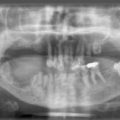Short-term, long-term and immediate monitoring
Constantly monitoring a parameter demonstrates performance up until the point at which it is considered that unacceptable performance has been detected. Hence, the data collected through QC measurements can be used not simply in a pass or fail fashion but to examine trends in performance and, if possible, use these as predictors for maintaining the performance of equipment.
One routinely used but simple trend technique is when a double tolerance level is set to monitor a parameter. Let these levels be ±a% and ±b% where b>a. Results outside ±b% are considered to require immediate attention while results outside ±a% and also within ±b% must occur on a number of subsequent occasions in order for action to be taken.
There are three major categories of quality control. Each involves drawing conclusions from measurement data obtained from different methods of monitoring: immediate monitoring, short-term and long-term monitoring. For treatment machines, each method provides different but appropriate means by which to evaluate and maintain performance as follows.
Immediate monitoring. In this category, the immediate effect on the performance of the machine is determined from the response to changing a control parameter. Using this approach, the optimum tuning of a circuit or system can be determined. The monitoring of the machine can involve both external and internal output signals. Internal parameters which alter as a consequence of the changed parameter can provide system response information and externally monitored characteristics of the beam, such as beam symmetry and energy, can also provide response information.
Long-term monitoring. Many parameters on a machine alter slowly as components age or their performance deteriorates. In order to correct and compensate for the deterioration, including replacement of a component, long-term data trends provide an indication as to when action is required. For example, this may be used to indicate the need to adjust a parameter which requires adjustment continuously over time in order to maintain the performance within an adequate value. Or it might indicate when the end of life of the device can be expected in order to schedule replacement and avoid treatment delays and interruption due to machine breakdown or lack of component availability. The data might again come from internal parameters of the machine or from measurements made independent of the machine. Inevitably, data are difficult to record, log and process. In particular, for measurements on the radiation beam, the results cannot be gathered in an entirely automatic manner and any system which can assist with the recording and processing of these data is invaluable.
Short-term monitoring. In contrast to immediate and long term, short term endeavours to determine the performance of the machine during a treatment day. Only internal parameters of the machine are recorded during the day for subsequent processing. By analysis of such recorded data, it is possible to identify deteriorating overall performance of the machine and schedule periods for attending to the machine. Although only internal parameters are monitored, it can be useful to compare the processed results with appropriate daily measurements of external beam characteristics.
Stay updated, free articles. Join our Telegram channel

Full access? Get Clinical Tree




